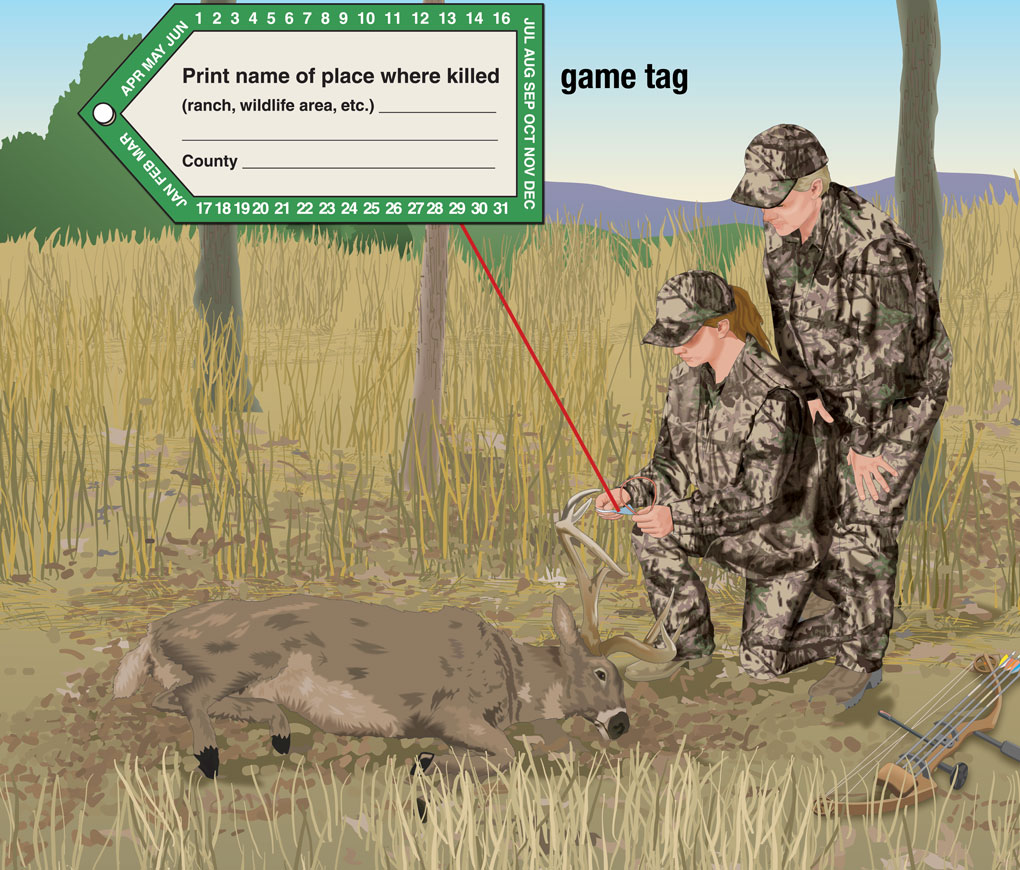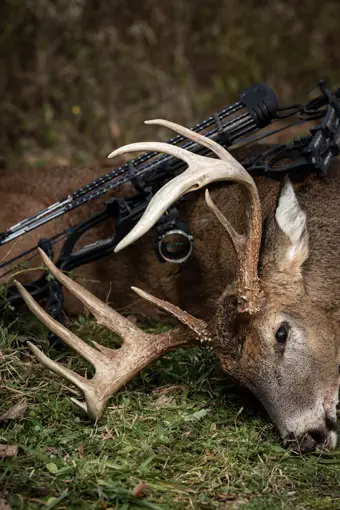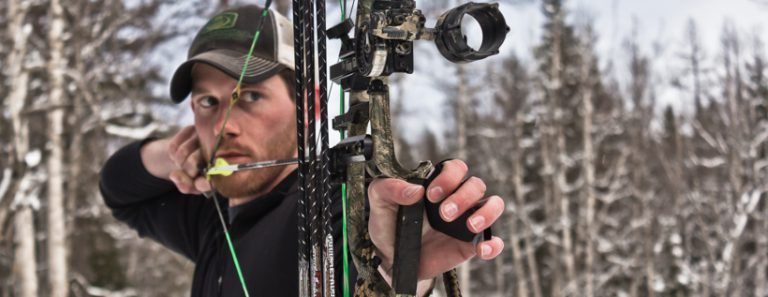Bow Hunting Laws And Regulations
Bow hunting laws and regulations dictate the legal requirements and restrictions for hunting with a bow. In many jurisdictions, bow hunting seasons and bag limits are specified, along with licensing and permit requirements.

Credit: ohiodnr.gov
Understanding The Purpose Of Bow Hunting Laws
Understanding the purpose of bow hunting laws is crucial for wildlife conservation. These laws ensure that endangered species are protected and prevent overhunting. By adhering to these regulations, we can maintain a balance between human hunting activities and the preservation of wildlife.
The goal is to safeguard the delicate ecosystems and biodiversity that our planet relies on. Bow hunting laws play a vital role in managing animal populations and preventing the extinction of species. It is important for hunters to familiarize themselves with these regulations and respect the limits they impose.
By doing so, we can ensure a sustainable future for both hunting enthusiasts and the natural world they cherish.
The Role Of Government In Implementing Bow Hunting Laws
The government plays a vital role in implementing bow hunting laws, regulations, and policies. State and federal agencies are responsible for overseeing these measures. They handle licensing and permitting processes, ensuring that hunters meet the necessary requirements. These agencies also enforce the laws and take appropriate actions against any violations.
By doing so, they ensure the safety of both hunters and wildlife. Bow hunting laws are put in place to maintain a balance between conservation efforts and the interests of hunters. Awareness of these regulations is crucial for every bow hunter to avoid any legal issues and to contribute to the preservation of natural resources.
State and federal agencies work together to enforce these laws, ensuring fair and responsible bow hunting practices.
Key Components Of Bow Hunting Regulations
Bow hunting laws and regulations encompass several key components that hunters must be aware of. These include season dates and bag limits, which determine the specific timeframe and number of animals that can be harvested. Additionally, there are species restrictions in place to protect certain wildlife populations and promote conservation efforts.
Equipment requirements outline the type of bows and arrows that can be used during hunting, ensuring safety and ethical hunting practices. Lastly, hunting area designations dictate where hunting activities are permitted and where they are prohibited. Understanding and adhering to these regulations is crucial for all bow hunters to ensure compliance with the law and contribute to the sustainability of wildlife populations.
By following these guidelines, hunters can enjoy their sport while also preserving the natural environment for future generations.
Ensuring Safety And Ethics In Bow Hunting
Ensuring safety and ethics in bow hunting is of utmost importance. Mandatory safety courses are required to educate hunters. Adhering to fair chase principles is essential for a respectful and ethical hunt. Responsible harvesting practices include taking only what is necessary and not wasting any part of the animal.
Respect for private property is crucial in bow hunting, as trespassing can lead to legal consequences. By following these guidelines, hunters can participate in the sport in a lawful and conscientious manner. It is necessary to stay updated on bow hunting laws and regulations as they may vary by location.
Controversial Aspects Of Bow Hunting Laws And Regulations
Bow hunting laws and regulations have always been a subject of controversy. Animal rights activists strongly criticize these laws, questioning the ethics of hunting. Balancing the interests of conservation and recreation is a challenging task. Evaluating the impact of hunting on ecosystems is essential to understand its ecological consequences.
It is crucial to ensure that bow hunting does not disrupt the natural balance of wildlife populations. Wildlife management agencies play a crucial role in implementing and enforcing these laws to maintain a sustainable hunting environment. Public input and scientific research are vital in shaping regulations that consider both the needs of hunters and the welfare of animals.
Sensible, well-thought-out laws can ensure ethical hunting practices while preserving the biodiversity and ecological integrity of our natural world.
The Role Of Public Input In Shaping Bow Hunting Laws
Public input plays a significant role in shaping bow hunting laws. Public hearings and surveys gather stakeholder engagement, ensuring all perspectives are considered. Evaluating the effectiveness of regulations is crucial in maintaining a balanced approach. The input from the public helps lawmakers understand the impacts of these laws.
By actively involving the community, authorities can create regulations that address concerns and minimize conflicts. Engaging with stakeholders through surveys and public hearings ensures transparency and allows for a more informed decision-making process. Ultimately, this public input helps shape bow hunting laws in a way that reflects the needs and values of the community.
Thus, creating an inclusive and effective regulatory framework for bow hunting activities.
Enforcement And Penalties For Violating Bow Hunting Laws
Enforcement and penalties for violating bow hunting laws can have serious consequences. Fines and license suspension are common penalties for breaching regulations. Those found guilty of poaching may face criminal charges. Reporting violations is crucial for maintaining hunting ethics and conservation efforts.
Evolving Trends In Bow Hunting Laws And Regulations
Evolving trends in bow hunting laws and regulations have led to expanding opportunities for bowhunters. With changes in technology and equipment, hunters can now engage in more efficient and effective methods of bow hunting. Legislative updates and revisions have further enhanced the regulations to ensure the safety and conservation of wildlife.
These advancements aim to strike a balance between the enjoyment of the sport and the preservation of natural resources. As a result, bowhunters can now experience a wider range of hunting grounds and target various game species. The evolution of bow hunting laws and regulations reflects the continuous efforts to support the sport while maintaining ethical and sustainable practices.
These changes provide bowhunters with greater flexibility and enjoyment in their pursuit of the sport.
Education And Awareness Campaigns For Bowhunters
Education and awareness campaigns play a crucial role in promoting ethical bowhunting practices. They help bowhunters stay informed about the laws and regulations governing their activity. Moreover, these campaigns raise awareness of conservation efforts, ensuring that hunters understand the importance of preserving wildlife habitats and populations.
By engaging in wildlife management initiatives, bowhunters actively participate in maintaining a healthy balance between the animal population and their environment. Through education, they learn about responsible hunting techniques and the concept of fair chase, ensuring that they only take shots under ethical circumstances.
These campaigns also provide valuable information on proper shot placement to minimize suffering. By staying educated and informed, bowhunters become ambassadors for sustainable hunting practices, conserving wildlife for future generations.
International Perspectives On Bow Hunting Laws And Regulations
Bow hunting laws and regulations vary across different countries, with each nation implementing its own set of rules. These regulations aim to ensure the sustainability and ethical practice of bow hunting. Comparing regulations across countries highlights the importance of adhering to international standards and best practices in wildlife management.
It also emphasizes the need for collaborative efforts in conservation, as wildlife knows no borders. The exchange of knowledge and experiences among countries can lead to effective strategies for preserving biodiversity and protecting endangered species. From licensing requirements to hunting seasons and permissible game species, understanding these regulations is crucial for bow hunters who travel internationally.
By respecting the laws and regulations of each country, bow hunters contribute to the preservation of wildlife and the sustainability of this ancient practice.
Frequently Asked Questions On Bow Hunting Laws And Regulations
Can Anyone Go Bow Hunting?
Yes, anyone who meets the legal requirements and obtains the necessary permits can go bow hunting. However, it is important to check the specific regulations and licensing requirements in your area before heading out.
What Are The Advantages Of Bow Hunting?
Bow hunting offers several advantages, including a longer hunting season, increased stealth and challenge, and a closer connection to nature. Additionally, bow hunting can provide a more intimate and rewarding hunting experience compared to using firearms.
Are There Any Restrictions On Bow Hunting?
Yes, there are certain restrictions on bow hunting that vary by location. These may include minimum draw weights for bows, prohibited hunting areas, restricted hunting seasons, required licenses and permits, and specific regulations for harvesting particular game species. It is important to familiarize yourself with the regulations in your area.
What Type Of Animals Can Be Hunted With A Bow?
Bow hunting allows for the hunting of a wide range of game species, including deer, elk, turkey, bear, and various small game. However, the specific animals that can be hunted may vary based on your location, hunting season, and the type of tags or permits you hold.
Is Bow Hunting Safe?
When practiced responsibly and with proper training, bow hunting can be a safe activity. However, it is important to follow all safety guidelines, including proper handling and storage of bows and arrows, being aware of your surroundings, and always using your bow in a safe and ethical manner.
Taking a bow hunting safety course is highly recommended for beginners.
What Equipment Do I Need For Bow Hunting?
To go bow hunting, you will need a bow, arrows, broadheads, a release aid, a bow sight, and other necessary accessories. Additionally, it is important to have appropriate hunting attire, such as camouflage clothing, sturdy footwear, and the necessary scent control products.
Proper equipment selection and maintenance are crucial for a successful and safe hunting experience.
Conclusion
Understanding and adhering to bow hunting laws and regulations is crucial for both the safety of hunters and the conservation of wildlife. By familiarizing ourselves with the specific laws in our area, we can ensure that we are hunting legally and responsibly.
These laws are in place to protect and manage our natural resources, as well as to prevent accidents and promote ethical hunting practices. As hunters, it is our responsibility to stay informed and keep ourselves updated on any changes or updates to these regulations.
By doing so, we can contribute to sustainable hunting practices and help maintain the delicate balance between human activities and the natural environment. So, let’s remember to always hunt within legal boundaries, respect our fellow hunters, and be good stewards of the wildlife that we are privileged to pursue.





